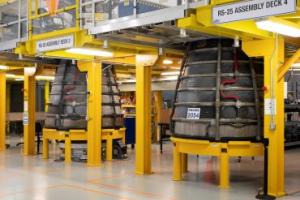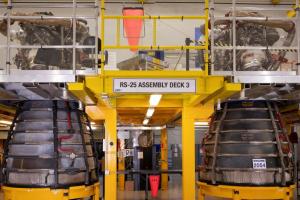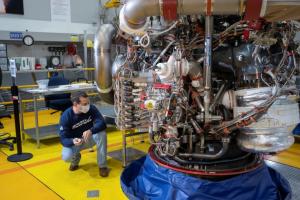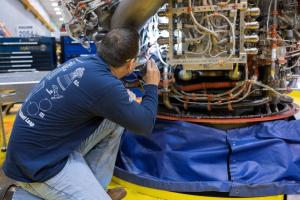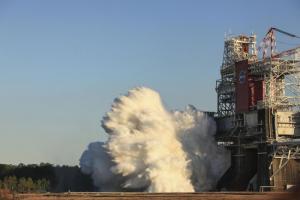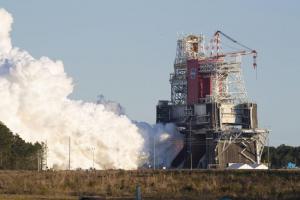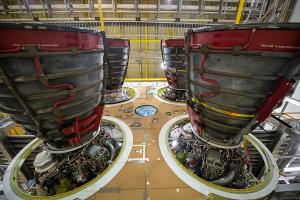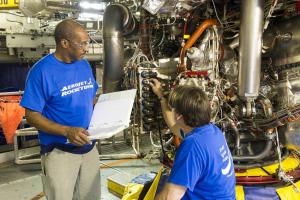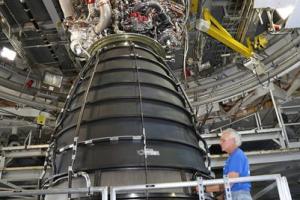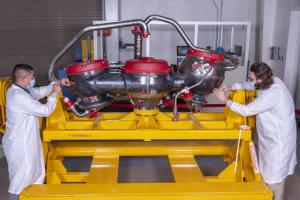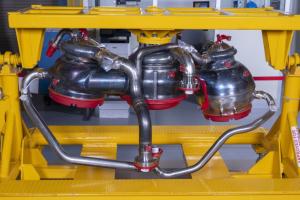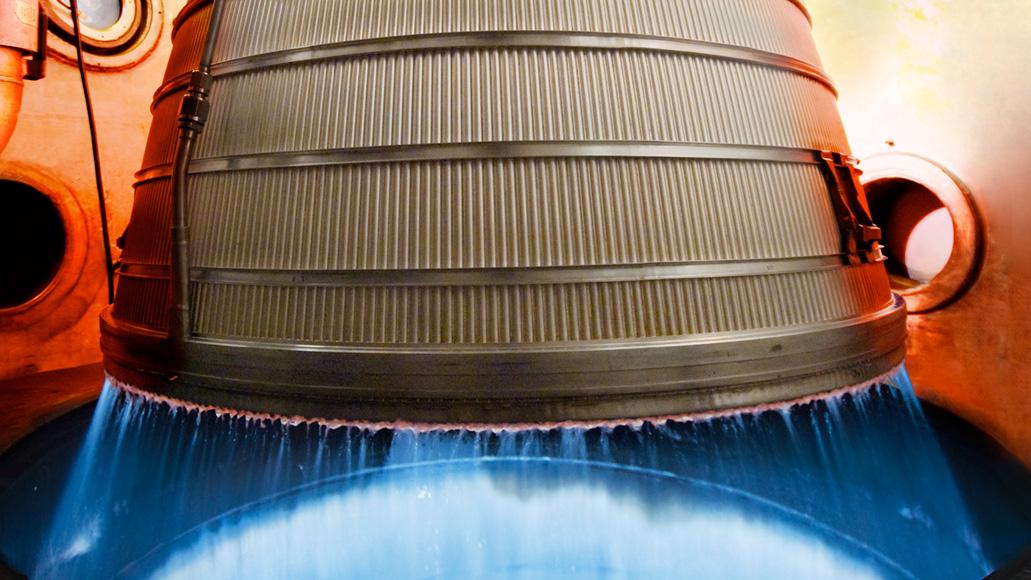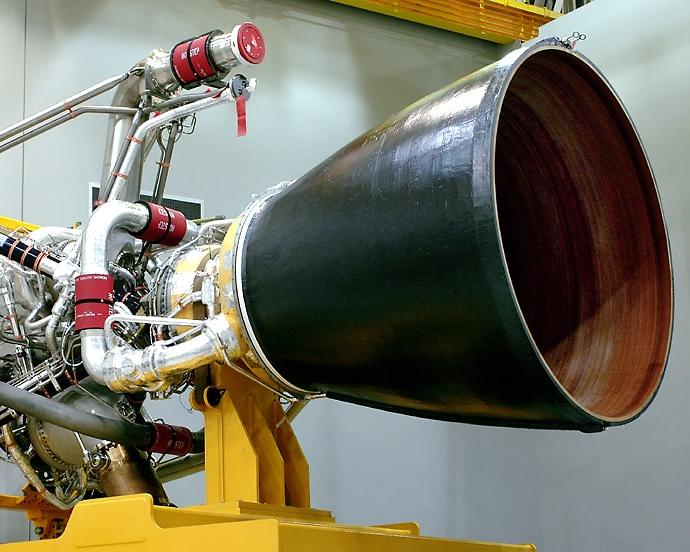RS-25 Engine
Powering Deep Space Exploration
Aerojet Rocketdyne is the prime contractor for the flight proven, high-performance RS-25 engines used to propel America’s next-generation heavy-lift launch vehicle, NASA’s Space Launch System (SLS). Four RS-25 engines located at the bottom of the core stage power the rocket on its eight and a half minute climb to space with more than 2 million pounds of thrust.
Key Features
The RS-25 evolved from Aerojet Rocketdyne’s Space Shuttle Main Engine (SSME) that successfully powered 135 flights of the space shuttle. The engine underwent five major upgrades during its life on shuttle, each time incorporating the modern technologies and innovations – and each time demonstrating major improvements in safety and reliability. Between the shuttle and SLS programs, the RS-25 and SSME engines have collectively compiled more than 1.1 million seconds of firing time.
The RS-25 is a staged-combustion engine cycle powered by liquid hydrogen and liquid oxygen, making it one of highest performing engines the nation has ever produced. The SSME engines on the shuttle typically operated at 491,000 pounds of vacuum thrust (104.5-percent of rated power level). The required power level for the RS-25 engines on SLS is 512,000 pounds vacuum thrust (109 percent of rated power level). Future evolutions will have even higher thrust capabilities.
Aerojet Rocketdyne has begun developing a new generation of RS-25 engines for when the 16 engines remaining from the space shuttle program are used. These engines are targeting a 30% cost reduction from the engines that flew on the space shuttle and will feature the latest in advanced manufacturing techniques, including 3-D printing.
Engine Specifications
|
Propellants |
Thrust |
Specific Impulse |
Dimensions |
|
Fuel: Liquid hydrogen |
Vacuum: 512,300 lb. |
Vacuum: 452 sec. |
Length: 168 in. |
Videos
Press Releases
- April 18, 2023 - Aerojet Rocketdyne Delivers Propulsion for Artemis III Mission
- Sept. 30, 2021 - Aerojet Rocketdyne Completes Successful Space Launch System Rocket Engine Test Series
- March 18, 2021 - From the Test Stand to the Launch Pad: NASA’s First Space Launch System Core Stage Delivered to Kennedy Space Center
- March 18, 2021 - Successful SLS Core Stage Hot-Fire Test Puts America One Step Closer to Returning to the Moon
- Jan. 27, 2021 - Upcoming RS-25 Engine Test Series Will Demonstrate Lower Cost Rocket Engine Components for NASA’s Artemis Program
- Aug 18, 2021 - Aerojet Rocketdyne Expands Los Angeles Facility for NASA’s Moon and Mars Rocket
- September 2020 - Gearing Up for SLS Green Run’s Main Event
- July 20, 2020 - Aerojet Rocketdyne Completes its Propulsion for NASA’s Artemis II Mission
- May 1, 2020 - NASA Awards Aerojet Rocketdyne $1.79 Billion Contract Modification to Build Additional RS-25 Rocket Engines to Support Artemis Program

